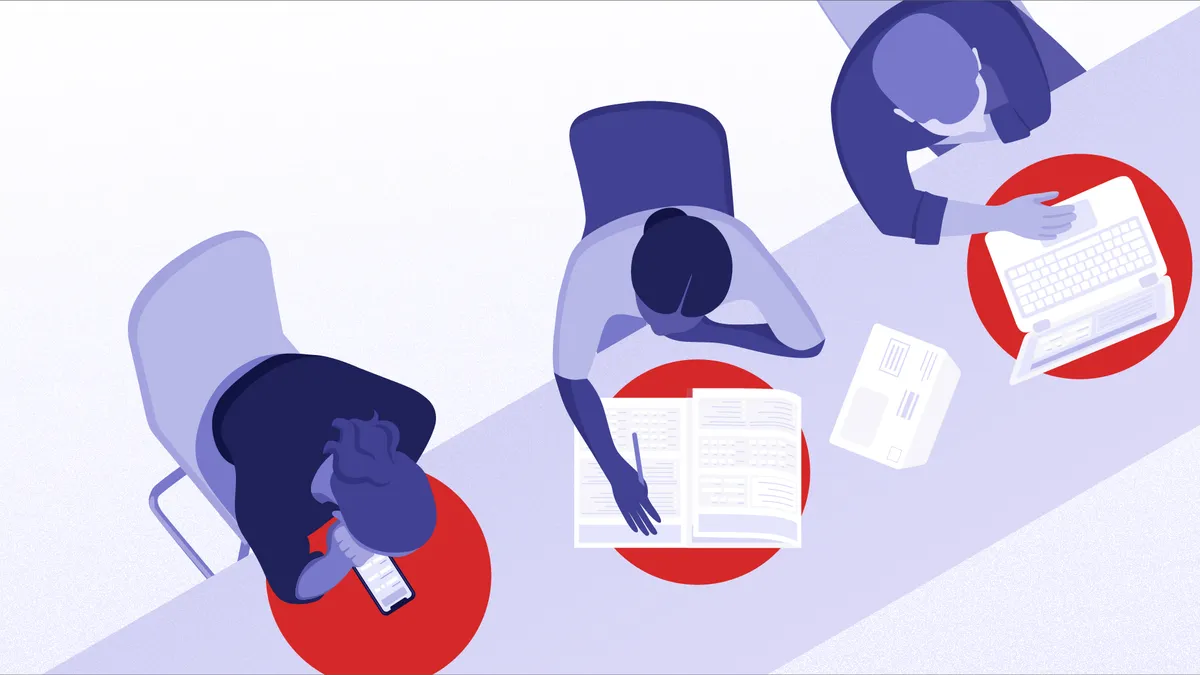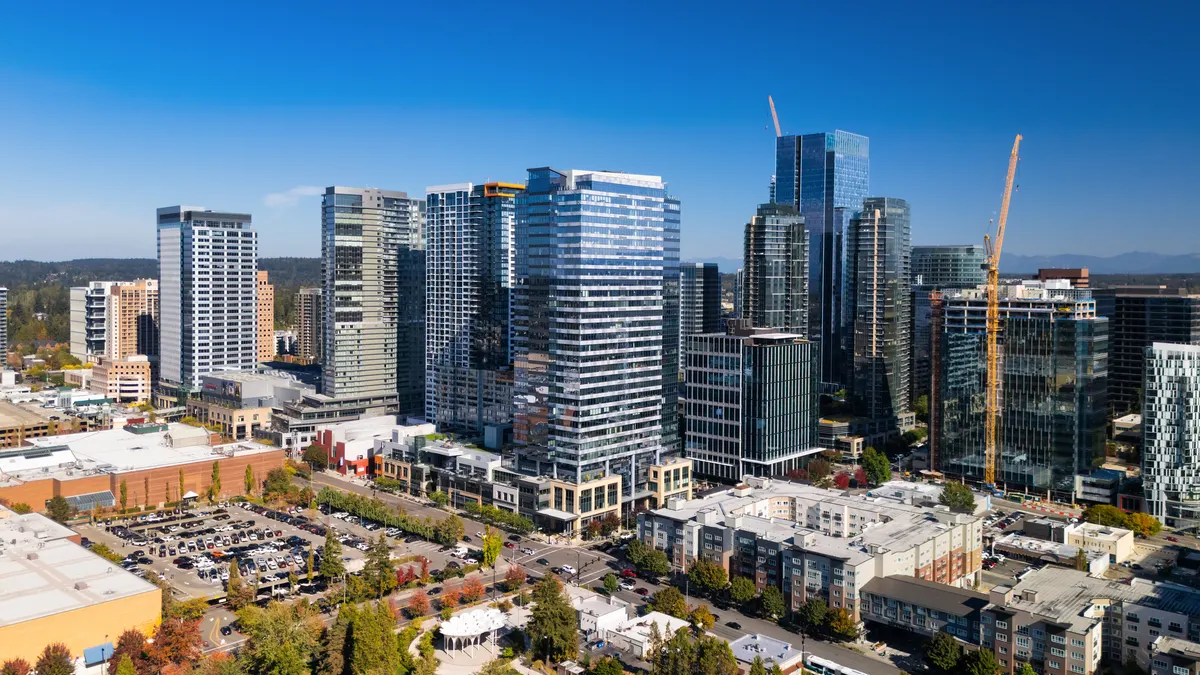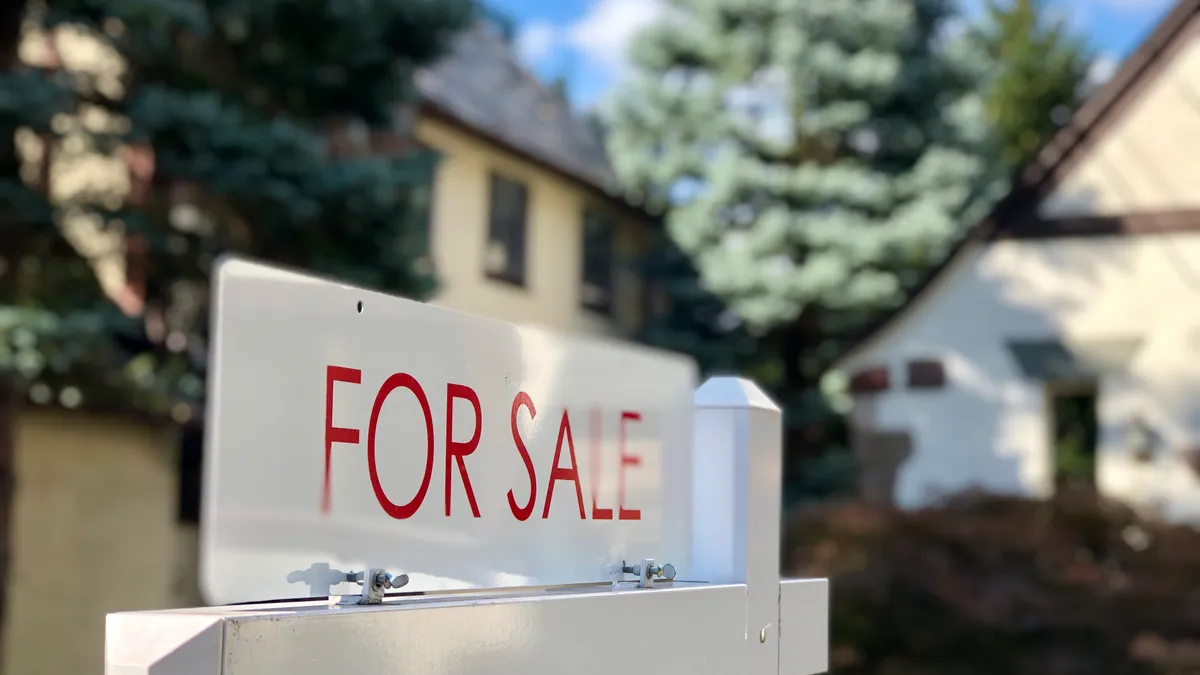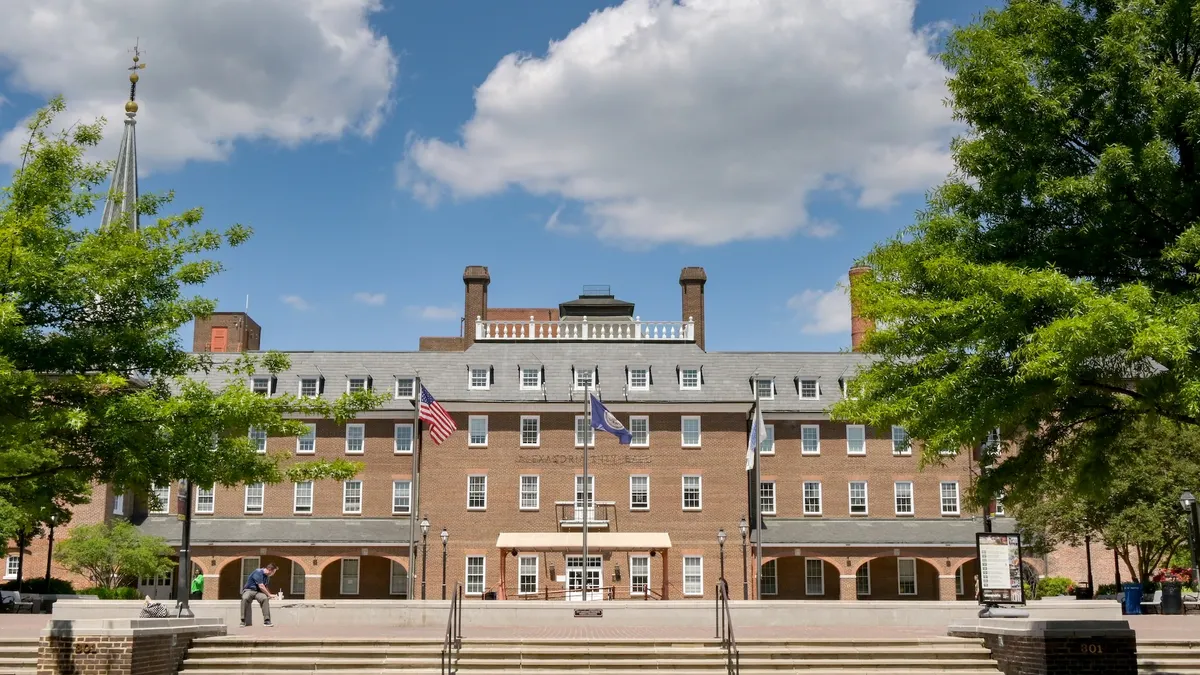For the first time, the U.S. Census will be carried out predominantly online, raising concerns about the digital divide, data privacy and dips in participation.
The prevalence of technology has helped cities drive extensive communications strategies that make use of social media and other channels. However, there are lingering concerns that social platforms could fall victim to misinformation from bad actors.
Cities and counties have spent heavily on detailed communications strategies and are also investing to ensure that those who cannot complete online census forms at home can do so by other means. But the online focus may still not be enough to prevent an undercount, according to experts.
"The more I think about that, the more concerned I get that there are going to be populations and communities that get cut off from the count," Federal Communications Commission (FCC) Commissioner Jessica Rosenworcel told Smart Cities Dive in an interview.
Already, there are troubling signs pointing to how the digital divide may impact response rates and dissuade traditionally undercounted communities from responding.
In written testimony to the House Oversight Committee in January, Marc Morial, president and CEO of the National Urban League, said only 39% of black residents self-responded to the census via the internet during the 2018 dress rehearsal in Providence County, RI. "The remainder of the Black count was achieved by door to door enumeration and the Bureau’s use of administrative records," Morial continued.
Communications strategies
In raising awareness about the upcoming census, cities started work early. Awarness is primarily led by dedicated staff but heavy lifting is also done by partners throughout the community.
"We look at it as a campaign," Megan Gosch, census management analyst for San Mateo County, CA, told Smart Cities Dive. "Of course, it's nonpartisan, but the same type of approach. We want to reach as many people in our county as possible in multiple different sources."
Many cities have invested in communications strategies, often as part of their Complete Count campaigns, which look to bring together city leaders, staff and community groups to coordinate their census response efforts. As part of its campaign, New York City is spending $8 million on media and advertising, including $3 million on community and ethnic media. Advertising will be in 16 languages.
Strategies for local-level communication about the census vary depending on a range of factors, including how much budget is available. Approaches at the city and county level include a timeline for the outreach plan with distinct phases, engagement with official social media accounts and subcommittees of the Complete Count program that will work in especially hard-to-reach neighborhoods to get the word out.
"We look at it as a campaign. Of course, it's nonpartisan, but the same type of approach. We want to reach as many people in our county as possible in multiple different sources."

Megan Gosch
Census management analyst, San Mateo County, CA
Tailored messaging to consider localities' varied populations and their preferred languages will be key too. For example, San Mateo County has the largest population of Tongans outside of Tonga, and will therefore have specialized messaging to that community, Gosch said.
"We've developed all kinds of messaging and communications, we have a plan, we have messaging guides, we have an online communications calendar that is based on each week," Gosch said. "We identify a theme that we want everyone to talk about, whether it's social media or articles or op-eds, our city newsletters."
It will also be key to engage and partner with community groups to help get the word out, especially in any hard-to-reach areas. In a panel discussion last year hosted by NLC, Arturo Vargas, CEO of the National Association for Latino Elected Officials (NALEO) Educational Fund, said teachers, healthcare providers and religious leaders are more trusted than elected officials to disseminate census information, so leaders should work with them.
"One of the most important things that happens through some of those Complete Count committees that are a combination of both government, community organizations and also citizenry, where they join forces to say, 'What can we do to partner to make sure that every single person in my community is counted?'" Francella Ochillo, executive director of nonprofit Next Century Cities, which advocates for equitable internet access, told Smart Cities Dive. "That's a really important part of this: to acknowledge that there's not going to be one stakeholder that gets to everybody that we need to reach."
Cities' communications around the census should already be in their final stages. In a speech at the Meeting of the Minds Annual Summit in Phoenix last month, Gilbert, AZ Chief Digital Officer Dana Berchman said she received a message relatively recently from a counterpart, asking when to start Census outreach.
"My response is: it's too late,” she said. "You have to already be there, you have to be engaging, you have to build that relationship. Social media is a two-way customer care, customer service conversation. Then when you need something, like, I need my residents to fill out a census and guess what, there's an online option for the first time, guess what, Gilbert has an online marketing outreach plan and we've been doing this for eight years."
Social media and cyber safety
While cities are leaning heavily on their communications and social media strategies to get people to respond to the census, concerns remain that social media platforms themselves could be used for misinformation around the count.
Last November, more than 50 members of the U.S. House of Representatives sent a letter to Twitter CEO Jack Dorsey calling on him and other social media platforms to "deter and mitigate interference in our upcoming count.” They also urged him to “share your plan to prevent census interference" and "follow through on your promise for Twitter to do better" considering previous misinformation efforts that have centered on the platform.
Twitter officials cite a policy addressing elections and other civic events, which includes the census. That policy states that users cannot share false or misleading information about how to participate in such an event, like stating that people can participate via a tweet or stating incorrect requirements for participation.
Census advertisements placed on Twitter fall under the company's civic engagement language on cause-based advertising policy, meaning they are permitted but must follow policies on certification and restricted targeting.
"We've been involved in conversations regarding the upcoming U.S. Census and joined Census Bureau representatives in workshops and meetings to discuss the best ways to support a successful 2020 Census," a Twitter spokesman told Smart Cities Dive in an email.
Similar concerns have been raised about Facebook and Instagram, which is owned by Facebook, and Pinterest — influential social media platforms that have been blamed for issues in previous years with civic engagement and misinformation. In response, Facebook and Pinterest both announced initiatives to help protect the census, including working directly with the U.S. Census Bureau to verify and remove misinformation on their platforms.
And Vanita Gupta, president & CEO of The Leadership Conference On Civil And Human Rights, noted in a January testimony to the House Oversight Committee that the Bureau has a dedicated website and email address for people to send any potential rumors or misinformation to for verification.
"I think tech companies are very mindful of the fact that their platforms may be used for disinformation campaigns," she said. "I think they've actually, to their credit, done a lot of outreach to advocacy groups that are working on census issues to say, 'What can we do to help?'"

Francella Ochillo
Executive director, Next Century Cities
While concerns over the role of social media are persistent and should be considered, the companies' efforts to try and combat disinformation are noble, Ochillo said.
"I think tech companies are very mindful of the fact that their platforms may be used for disinformation campaigns," she said. "I think they've actually, to their credit, done a lot of outreach to advocacy groups that are working on census issues to say, 'What can we do to help?' Whether that's making tags to denote verified sites, making sure that disinformation is immediately removed, those types of efforts are very valuable right now."
As for the security of the census itself, there are concerns that it could be hacked and identifying information stolen. In a February report, the U.S. Government Accountability Office (GAO) said the Census Bureau is behind schedule on hitting targets for developing technology and mitigating cybersecurity risks, including implementing recommendations from the Department of Homeland Security.
During a hearing of the House Oversight Committee just after the report’s release, Nick Marinos, GAO’s director of information technology and cybersecurity, said "significant challenges remain," although good progress has been made on combating web-based attacks like phishing. He called on the Census Bureau to stay focused on hitting its remaining cybersecurity targets, including around data recovery in case of a hack.
Census Bureau Director Steven Dillingham said officials are "ready to mobilize a different process" if something goes wrong, primarily going out into communities to take responses manually, although some elected officials were not convinced.
"It looks like we don’t have a contingency, any way to recover data that is lost," Rep. Eleanor Holmes Norton, D-DC, said.
The digital divide
While the bulk of census survey responses are expected to be sent from online, there are still concerns that the digital divide could prevent many from responding, with some organizations looking to work around that issue.
Rosenworcel noted FCC data that shows 21 million people in the United States lack access to broadband, although she also said other studies have shown that number is much higher.
For some cities, that makes them even harder to count. The Associated Press found last year that Detroit is the city with the hardest to count populations due to its thousands of vacant homes, lack of internet access and high rates of poverty. The federal government should step in and provide extra support to address these particular challenges, according to local leaders.
"If the federal government is using the internet as a vehicle to determine population sizes to ultimately allocate funding, the federal government should also provide resources for communities to boost broadband adoption and to ensure an accurate count," Joshua Edmonds, the City of Detroit’s director of digital inclusion, said in written testimony to the House Energy and Commerce Committee's Subcommittee on Communications and Technology during a hearing on internet equity.
Meanwhile, cities have options to address the lack of home broadband that could restrict people’s ability to respond to the census, experts say. In a toolkit released late last year, Next Century Cities called on cities to implement census kiosk programs, where public devices are set up in prominent, accessible areas to allow people to complete the census online. Partnering with community groups can help achieve that, according to the organization.
"We need community partners of all stripes," Ochillo said. "It doesn't matter if you're a library or a school, or just citizens who get together and care. There are ways for us to make sure people have digital access, especially to make sure they're counted for the census."
If there is a low internet response rate, some worry it not only could result in a major undercount of hard-to-reach populations but could also stretch the Census Bureau's resources to the breaking point. Without ways to bridge the digital divide, it could create even more barriers.
"A lower-than-projected Internet response rate could strain the Census Bureau’s already limited resources by increasing response by paper questionnaire or telephone or, more costly and inefficient, the number of households that require door-to-door follow-up," Gupta said.





















